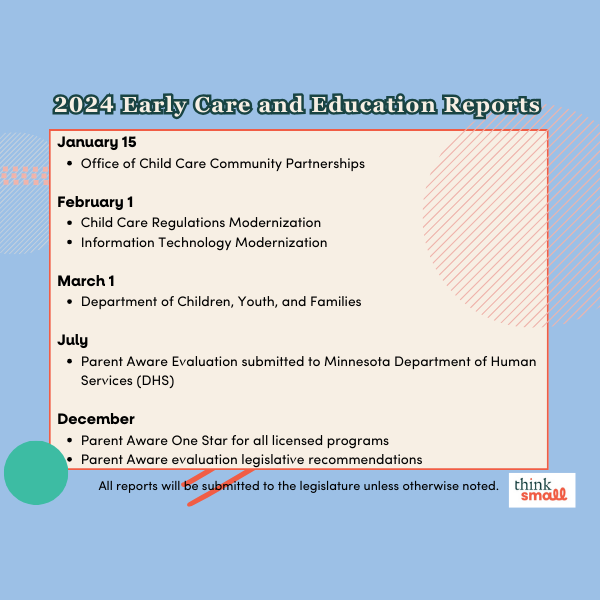If you’ve used the Child Care Cost Calculator and you’re left wondering: How the heck would all of this work? This blog post is for you!
Think Small created the Child Care Cost Calculator to share information with parents about what the impact would be if the state and/or federal government acted on a commonly cited goal, a goal that the Minnesota Legislature actually passed into law in 2023, of creating a child care system where no family would have to pay more than 7% of their income to access quality child care. 7% might seem kind of random, but it actually comes from an analysis that was done by the federal government to look at all of the basic, necessary expenses faced by families with young children and what a reasonable or “affordable” amount would be for those families to spend toward child care. You may have heard that families should plan to spend about 30% of their income toward housing, well the number for child care is 7%. And that 7% has been consistent across the Trump and Biden Departments of Health and Human Services, so it is something there is broad agreement on. At the federal level there have been a few proposals put forward using the 7% standard. And, the Minnesota Legislature passed a law that sets a goal for a 7% system based on the recommendations of a state-specific task force. The details of the federal proposal and the Minnesota framework are pretty similar, here are the basics:
- No family would have to pay more than 7% of their income toward child care for ALL of their children under age 5. A family could pay more than 7% if they wanted to.
- What families actually pay would be dependent on their income with a sliding scale that starts at 0% for families with the least income and goes up to 7%. If 7% of a family’s income is enough to cover the cost of quality care, they would not receive a benefit. This is different than public Kindergarten through 12th grade education where all families pay 0%.
- The difference between what families would pay and the cost of quality child care would be bridged by the government. This is similar to how existing government-funded child care programs work. A provider charges a certain amount of tuition, families are responsible for some portion, the provider then bills the government for the remainder.
- Quality assurance mechanisms, like Minnesota’s Parent Aware Ratings, would be used to ensure that children benefit from kindergarten-readiness best practices.
- Child care providers would be paid amounts that would ensure that the early educators who care for and teach young children are fairly compensated, and that programs are able to offer the types of stimulating environments and experiences that help children develop cognitive skills in areas like literacy and math, and also social emotional and executive function skills.
- Families would have the choice of attending any quality program of their choice, including programs based in centers, homes, faith-based organizations, public schools, or Head Start. Research shows that children in all of these types of settings make progress on important school readiness skills, and that parents value the opportunity to choose a program that best fits their location, culture, schedule, and other preferences.
You better believe that there are a lot more details that are being worked on by officials in both the state and federal governments. It is also the case that while planning is underway, there is insufficient public investment to make any of this real. Check out our guide on how to help move forward on a 7% solution in Minnesota.







